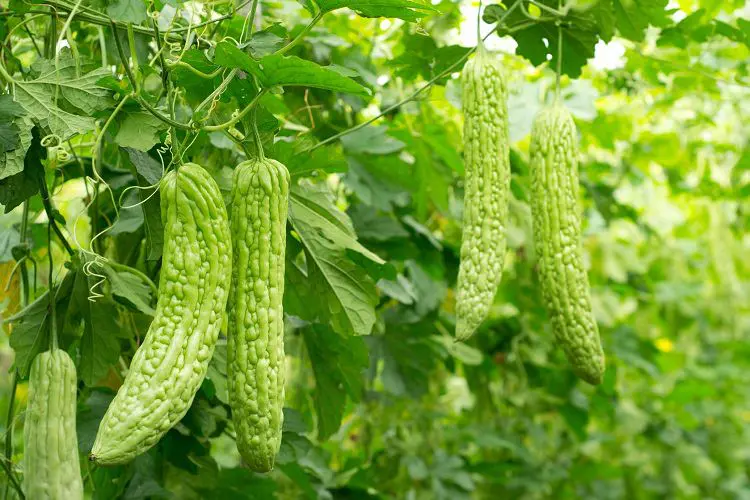Farmers can increase their income by cultivating vegetables. This is also being encouraged by the government. In such a situation, if hybrid farming is done, then a good profit can be earned from the vegetable crop. Today we will talk about the hybrid cultivation of bitter gourd. There are some important guidelines of hybrid cultivation of bitter gourd, due to which farmers can get a good profit.
Benefits of bitter gourd
Consuming bitter gourd juice and vegetables is beneficial for many diseases. Consumption of bitter gourd is also helpful in vaginal or uterine diseases, leprosy, and other diseases. Bitter gourd removes weakness. Apart from this, there is benefit in stomach irritation, phlegm, and respiratory disorders. Bitter gourd is also beneficial in irritability, gonorrhea, piles etc. Not only this, bitter gourd seeds are used in wounds, alimentary canal, spleen disorders and diseases related to the liver.
What is Hybrid Bitter Gourd
The hybrid variety of bitter gourd overgrows and matures sooner than the native variety. Therefore, the fruit’s size is more significant than the typical bitter gourd type. However, it also gets reasonable prices in the market. That’s why most farmers use hybrid bitter gourd seeds. However, hybrid bitter gourd seeds are slightly more expensive than native seeds.
Climate and Soil
A warm environment is required for the cultivation of bitter gourd. It can be grown successfully in both the summer and rainy seasons. The 25 to 35 degrees centigrade temperature is suitable for good growth, flowering, and fruiting in the crop.
Best time for planting
Bitter gourd can be cultivated twice a year. Wintering bitter gourd varieties can be sown in January-February, yielding in May-June. On the other hand, summer varieties are planted during the rainy season in June-July, whose yield is obtained till December. For profitable planting, you have to prepare the field in the right way. For this, you can use Swaraj 735 to attach implements. As Swaraj 735 price is quite reasonable for Indian farmers.
Field Preparation
First, ploughing the field properly with a tractor and cultivator makes the soil friable. After this, level the field by applying a pat. Apart from this, there should be a proper drainage system, and there should be no waterlogging. After this, before sowing, make drains in the field so that water does not accumulate in the area. Drains should be made in a flat lot with soil on both sides.
Manure and Fertiliser
25-30 days before sowing bitter gourd seeds, 25-30 tonnes of cow dung or compost should be mixed in a one-hectare field. 30 kg urea should be applied 20-25 days after sowing and 30 kg urea after 50-55 days at flowering and fruiting. Urea should be used in the evening when there is good moisture in the field.
Seed Treatment
Five hundred grams of bitter gourd seed is sufficient for sowing in one acre. At the same time, before sowing, the seeds should be removed and dried in the shade.
Sowing Method
Bitter gourd seeds should be sown at 2 to 3 inches. Sowing of male parents in 1/5 part of the field and female parents in 4/5 should be done in separate sections. Build strong scaffolds for the crop and mount the plants on them so that the fruits do not spoil. For the sowing method, you have to use efficient implements as it makes your work easy and more productive. And for attaching these implements, you can use Swaraj 963 tractor. As Swaraj 963 price is affordable for farmers.
Irrigation
When sowing bitter gourd in the rain, even less irrigation works in it, but it must be rinsed in summer. While washing, care should be taken that there is no stagnation of water in the field. For this, drains should be made in the area so that moisture remains in the land, but water does not stagnate in the field.
Harvest
The fruits become bright orange when ripe. The fruit should be plucked only when at least two-thirds of the fruit is orange in colour, as the seeds are poorly developed in less ripe fruits. When overripe, the fruit cracks and seeds are lost.
For more details, please stay connected with us.

